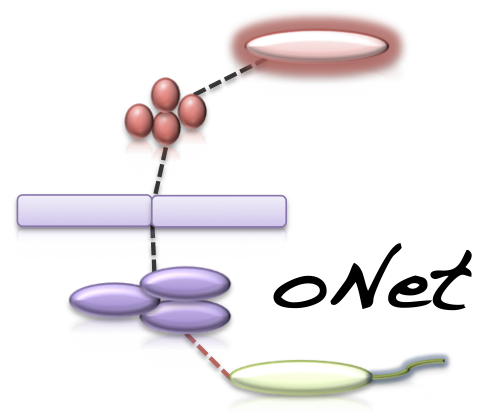CoNet - Scenarios
This page lists CoNet settings for specific scenarios. Each scenario provides a demo settings file and demo data (see also Datasets page). Make sure that you point to the correct paths of your local copy of these data when using the demo settings. In addition, key configuration lines of a scenario are highlighted, so they can be copied and pasted into your own settings file.
- I want to build a cross-correlation network between two different matrices.
- I want to compute permutation-based p-values for my Pearson network.
- I want to avoid within-genus links.
- I want to build a network from presence/absence data.
- I want to adjust p-values using the BS_FD routine (Lallich et al.).
- I want to compute the intersection between top edges of Spearman and mutual information (MI).
- I want to build a cross-correlation network between two different matrices.
Frequently, this concerns a matrix containing OTUs and another containing metabolites. Both matrices need to provide the same column number, i.e. the same number of samples. Note that an alternative way to compute cross-correlations is to assign groups to rows, as described in tutorial 1
[demofile] [matrix 1] [matrix 2]input==location-of-your-first-input-matrix secondInput==location-of-your-second-input-matrix # copy the two lines below if you need to normalize # your data matrix-wise (such that sample total counts add # up to one within matrices) groupattrib==matrix_number stand==col_norm
- I want to compute permutation-based p-values for my Pearson network.
Permutation is presumably the most widespread way of computing p-values for Pearson. The p-value is computed distribution-free, using the formula: (r+1)/(n+1), where n is the number of random scores and r is the number of times the original score is worse than the random scores. A remarkable alternative to permutation-based p-value computation is provided by random matrix theory
[demofile] [matrix] [metadata]# measures ensemblemethods==correl_pearson # automatic threshold setting thresholdguessing==edgeNumber guessingparam==1000 # randomization filter==rand iterations==1000 resamplemethod==shuffle_rows randroutine==edgeScores edgethreshold==0.05 # multiple test correction multicorr==benjaminihochberg
- I want to avoid within-genus links.
To avoid links between taxa that might have been cross-assigned, some authors propose to consider only links above a certain taxonomic level.
[demofile] [matrix] [metadata]# of course, this can be another taxonomic level groupattrib2==genus # this needs to point to your tab-delimited metadata file # holding the genus assignments metadata==location-of-your-metadata-file # needs to contain the group attribute metadataattribs==genus
- I want to build a network from presence/absence data.
See tutorial 2 for an example.
# flag the presence/absence data set matrixtype==incidence method==ensemble # run the hypergeometric distribution ensemblemethods==distrib_hypergeometric # with minimum significance of 1 ensembleparams==distrib_hypergeometric~lowerThreshold=1.0
- I want to adjust p-values using the BS_FD routine (Lallich et al.).
The BS (bootstrap-based false discovery) routine adjusts thresholds of measures according to a fixed number of false discoveries (set to one), by computing measure-specific global score difference distributions for original and bootstrapped data. The BS_FD routine was developed for association rule mining.
[demofile] [matrix] [metadata]# measures ensemblemethods==correl_pearson/correl_spearman/dist_kullbackleibler # automatic threshold setting thresholdguessing==edgeNumber guessingparam==50.0 topbottom==true # randomization filter==rand iterations==100 randroutine==lallich edgethreshold==0.05 - I want to compute the intersection between top edges of Spearman and mutual information (MI).
MI is a generic measure of dependency, but it cannot differentiate between copresence and mutual exclusion (therefore edges are colored in black). If combined with a measure of correlation, the interaction type can be inferred if MI and correlation measure agree on an association.
[demofile] [matrix] [metadata]# measures ensemblemethods==correl_spearman/sim_mutInfo # automatic threshold setting thresholdguessing==edgeNumber guessingparam==50.0 # intersection networkmergestrategy==intersection # mutual information-related settings: we compute MI with minet mi_minet==true minetdisc==equalfreq minetmiestimator==mi.shrink # need rserve to access minet no_rserve==false
